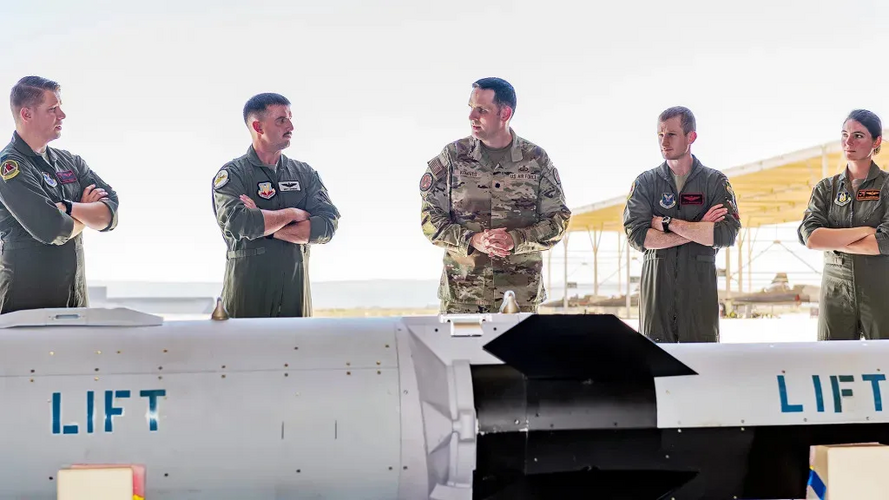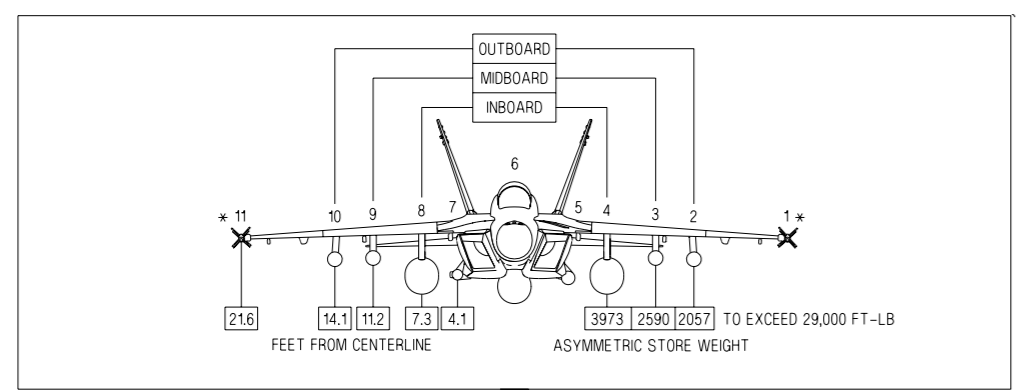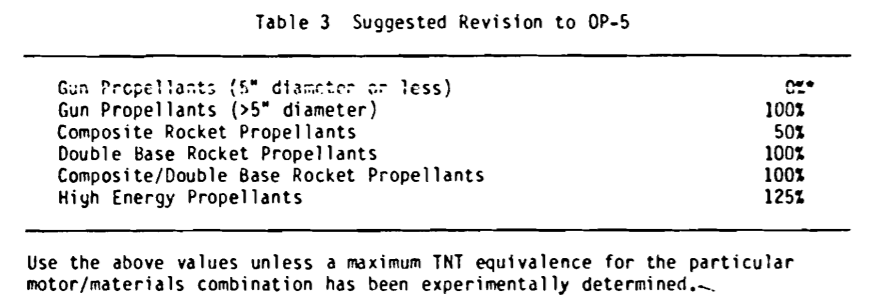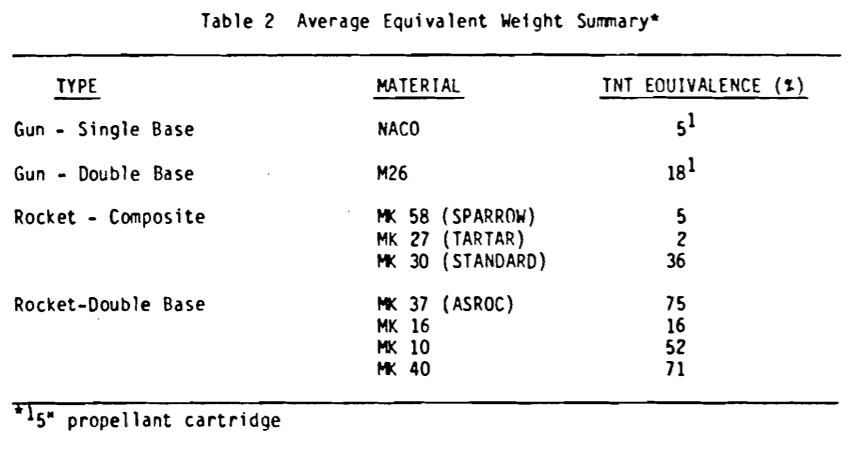Try this the other way...
Looks like a pretty important table out of the back of that report, but I'm not sure if it was adopted?
| Table 3 Suggested Revision to OP-5 | |
|---|
| Gun Propellants (5" diameter or less) | 0%* |
| Gun Propellants (>5" diameter) | 100% |
| Composite Rocket Propellants | 50% |
| Double Base Rocket Propellants | 100% |
| Composite/Double Base Rocket Propellants | 100% |
| High Energy Propellants | 125% |
* 5-inch diameter charges are below the critical diameter for most charges; moreover it is extremely unlikely that a sufficient stimulus can be brought to bear on these rounds, as they are generally stored separately from their projectiles.







